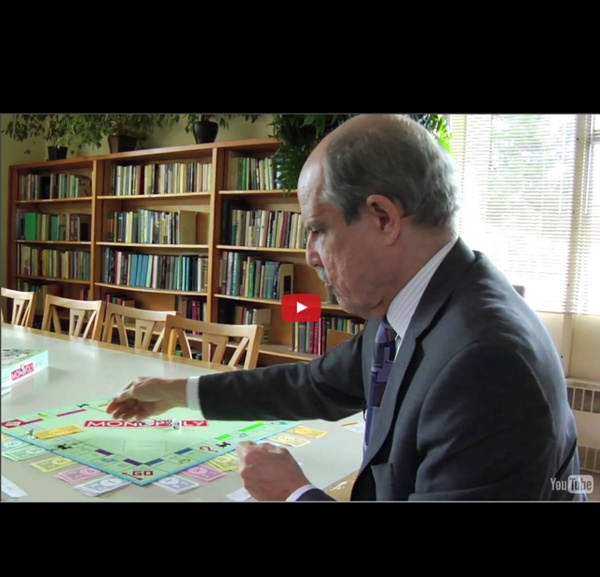



Análise gráfica das votações da câmara dos deputados | PoliGNU - Grupo de Estudos de Software Livre da Poli-USP Autores: Em nosso primeiro post [1] apresentamos uma comparação numérica entre a atuação dos partidos na câmara dos deputados baseada nas votações realizadas na câmara. Este primeiro post rendeu inclusive uma matéria [2] no jornal A Gazeta do Povo, do Paraná. Neste novo post apresentaremos 1) uma nova análise realizada de forma gráfica; 2) uma correção do cálculo da semelhança, o que resultará em novos valores; e 3) a interpretação correta para os valores das semelhanças. Anteriormente obtivemos resultados de semelhanças entre partidos dois a dois: podíamos dizer a semelhança entre PT e PSDB, entre PT e PV, entre PV e PSDB, e assim por diante. Mas tínhamos um grande problema: como representar todas essas semelhanças em um gráfico ao mesmo tempo? Dado esse problema, um de nós (o Saulo, que não participou do projeto até o primeiro post) sugeriu o uso da análise de componentes principais, ou PCA [3] na sigla em inglês. E eis que aplicando o PCA obtivemos o seguinte resultado:
What Do Blind People Find Attractive? Open Source Economy An open source economy is defined as an economy in which the development of goods and services happens via open collaboration between independent stakeholders on the global level. It is an economy where the rate of innovation across all sectors is significantly higher than the rate of innovation provided by proprietary research and development characteristic of the 20th century and the beginning of the 21st century. In short, the open source economy is efficient: it avoids competive waste - thereby optimizing not only production, but also - distribution. An open source economy related to the work of Open Source Ecology is defined as a parallel economy that can gain a significant market share of global production, within a context of artificial scarcity that is charactisting of Business as Usual enterprises. The open source economy is an economy that optimizes both production and distribution, while providing environmental regeneration and social justice.
Dinnermost Thoughts - Awkward Spaceship Zenman Energy - Non-Profit Solar Research Psychological Wellness: What Has Happened to our Understanding of Mental Health? Open Source Ecology SimSensei 2011-present Project Leader: Mark Bolas, Jonathan Gratch, Arno Hartholt, Stacy Marsella and David Traum Principal investigators: Albert “Skip” Rizzo and Louis-Philippe Morency Summary The University of Southern California Institute for Creative Technologies’ (ICT), pioneering efforts within DARPA’s Detection and Computational Analysis of Psychological Signals (DCAPS) project encompass advances in the artificial intelligence fields of machine learning, natural language processing and computer vision. These technologies identify indicators of psychological distress such as depression, anxiety and PTSD, and are being integrated into ICT’s virtual human application to provide healthcare support. Goals This effort seeks to enable a new generation of clinical decision support tools and interactive virtual agent-based healthcare dissemination/delivery systems that are able to recognize and identify psychological distress from multimodal signals.
Meditação Vipassana Rotational illusion Rotating illusion "Rotating snakes" Circular snakes appear to rotate 'spontaneously'. Copyright A.Kitaoka 2003 (September 2, 2003) Explanation (PDF file) "Candies" The two concentric arrays of "candies" appear to rotate in the different directions when we approach or move away from the figure while fixating at the center. Copyright A.Kitaoka 2002(c)Akiyoshi Kitaoka "Trick eyes" Tokyo: KANZEN 2002 "Umbrellas" The circles in front appear to rotate counterclockwise. Copyright A.Kitaoka 2003 "Co-op" Circles appear to rotate. "Caprice rotation" The left and right half circles appear to rotate sometimes. "Boats" The ring of boats appears to rotate slowly. "Rotating checks" Illusory radial lines appear to rotate. "Absorption" The surround appears to move to the center. "Cogwheels" The outer ring appears to rotate clockwise while the inner one counterclockwise. "Stealthy rotation" The circle appears to rotate counterclockwise when seen in peripheral vision. "A waterwheel" "Sheep" "Allergen" Circles appear to rotate.
Rich people vs Poor people behaviour regarding the amount of money they have.
RICH people tend to be more selfish, cruel and prepotent, whereas POOR people use to act with a low-profile but share what they have and experience more positive and rewarding emotions. by alexq Aug 9